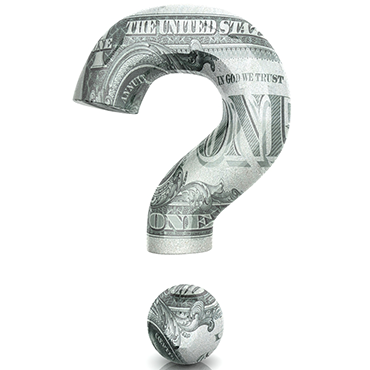To buy better, government must know what it spends

Agencies can put more money on mission by analyzing accounts payable data. The former leader of the U.K.'s Government Procurement Service explains what it takes.

I led the United Kingdom's Government Procurement Service (GPS), the U.K. equivalent to the U.S. General Services Administration, during the world financial crisis and the consequent recession and budget constraints. GPS was under pressure to deliver significant savings, improve efficiency and get more output and value from the government's spending on common goods and services.
That period's year-on-year reductions in the number of civil servants and budget cuts were compounded by challenging socioeconomic conditions, such as a growing demand for health care, an aging population and an increased need for housing and social services.
We needed big savings in the short term, and we needed to set the stage for long-term procurement transformation to achieve greater efficiency and better outcomes further on. We began by identifying opportunities to aggregate and centrally coordinate procurement, much as Office of Federal Procurement Policy Administrator Anne Rung and GSA's Federal Acquisition Service are doing to encourage the U.S. government to "buy as one" using category management.
At the heart of the U.K. effort was an analysis of spending, which we used to provide management information that would help us make the best operational decisions. We also used it to develop strategic plans in key spending categories for leveraging government demand and interacting more effectively with suppliers. The analytics provided the launching pad for a procurement transformation that saved millions of U.K. pounds and made those funds available to agencies for mission accomplishment.
At base, we determined how much we were spending with which companies, on which contracts, in which departments, for what and in which categories so we could begin to get our spending under management, aggregate it where appropriate and leverage it for better outcomes, prices, terms, conditions, quality and performance.
Although that seems intuitive and not a very impressive undertaking, it was the first time the U.K. had attempted to fully understand the size and nature of its procurement spending. Until 2010, when we were able to calculate that central agencies (including local governments and the National Health Service) bought goods and services totaling about $340 billion in U.S. dollars, we had never produced a fully accurate and reliable total for the government's third-party spending.
"These improvements in data management systems give the clearest picture yet of procurement patterns across government," the National Audit Office noted in 2013.
Trends vs. detail
Since I have been in the United States, I've discovered that U.S. agencies often lack spending data, too. Without it, many rely on the Federal Procurement Data System, which wasn't built for the job.
FPDS cannot truly track spending. For one thing, it contains data on contract obligations, not actual outlays. Obligations occur when agencies legally commit to spend money via contracts, purchase orders, hiring and the like. But how much and what is actually supplied often change after the obligations are made and before purchases are final. FPDS doesn't record those changes.
There is no detailed central public database of agency spending — checks issued, electronic funds transferred, cash paid — or of agency accounts payable, which could provide more specificity and accuracy about spending on goods and services.
FPDS cannot provide agencies with a full range of critical information, such as exactly what they are spending, their top suppliers by value of expenditure, , their unit pricing for goods or services within each organization or the number and size of suppliers within each spending category. FPDS isn't organized to enable agencies to effectively categorize their spending and analyze it in a market-facing way so they can pursue strategies to drive value within specific industries.
Instead, FPDS data is organized by broad industry and product or service codes. Contracts are assigned codes based on the predominant product or service in the order, even when it includes a wide variety of items. "For example, an order for $1,000 of lumber and $500 of pipe would be coded as 5510 Lumber and Related Wood Materials," according to the FPDS Product and Service Codes Manual. So the data lacks enough detail to accurately categorize even contract obligations.
That dearth of detail, along with questionable data quality, makes FPDS more useful for a high-level view of buying trends than for an analysis of spending. As the Congressional Research Service noted last year: "Decision-makers should be cautious when using obligation data from FPDS to develop policy or otherwise draw conclusions."
GSA is working on the Integrated Award Environment initiative to improve the reliability and pertinence of the data in FPDS and other procurement systems. When the initiative is complete, the IAE likely will be a better source for data-based acquisition decision-making.
From data to insights
In the U.K., we faced a set of procurement data problems almost identical to those challenging U.S. agencies today, including poor quality, little granularity, reports only at the very highest level and no continuous reporting. We began with the best available data, and it was far less comprehensive or useful than FPDS. So we set about establishing a governmentwide baseline to create the first view of total third-party spending and gauge the maturity of the data we had.
We engaged a company that used its commercial cloud-based software to gather data on and analyze annual central government spending through 100-plus organizations. During the first round of 16 weeks, we collected accounts payable data from the majority of those organizations, covering 84 percent of central government spending.
We used live accounts-payable data, not contracts or obligations data. And our analytics partner cleaned, corroborated, corrected, transformed, classified and enriched that data to enable analysis, then organized it by categories. We compiled agency-specific and governmentwide spending analytics and live monthly reporting and eventually built dashboards for agencies and policymakers.
Those analytics enabled GPS and individual agencies to create all sorts of value, such as identifying high-performing and cost-effective suppliers and helping agencies manage their demand — for example, by identifying where they were spending unnecessarily or ineffectively.
In addition, we could see when agencies were spending outside the most efficient governmentwide contracts and guide them to savings opportunities. Spending data also showed whether capable small and medium-sized companies were receiving the levels of spending set by government policy.
The data gave us insights into suppliers' behavior, which we used to improve our relationships with them. Because we were better able to predict and deliver governmentwide spending, suppliers gave us better prices and terms, as well as more information about their operations. Those insights led us to ask better questions and learn more about the industries where we spent the most, making us even better buyers.
Cutting computer costs
For example, we learned about the hundreds of suppliers and in excess of 20 large resellers and systems integrators from which we bought computers, printers and software. When spending data revealed that we were paying large price differentials agency to agency and in comparison with commercial buyers, we set about finding why.
Understanding the industry led us to negotiate directly with original equipment manufacturers using government volume to win better prices, which we directed our resellers to leverage. Examining supply chain practices revealed other levers for savings, such as having suppliers piggyback on optimal OEM distribution routes.
It is safe to say that none of this would have been possible if we had not first collected, corrected and analyzed accounts-payable data. Our lessons have been hard-won, but they have saved hundreds of millions of pounds that were used to deliver better outcomes for citizens. Spending analysis made us smarter and more effective buyers and customers -- and made our suppliers sharpen their pencils to provide better performance, terms and pricing.
Analyzing true spending data can help create a smoother and more direct path to better delivery and more savings for U.S. agencies as they move to manage their spending using a category management operating model.


